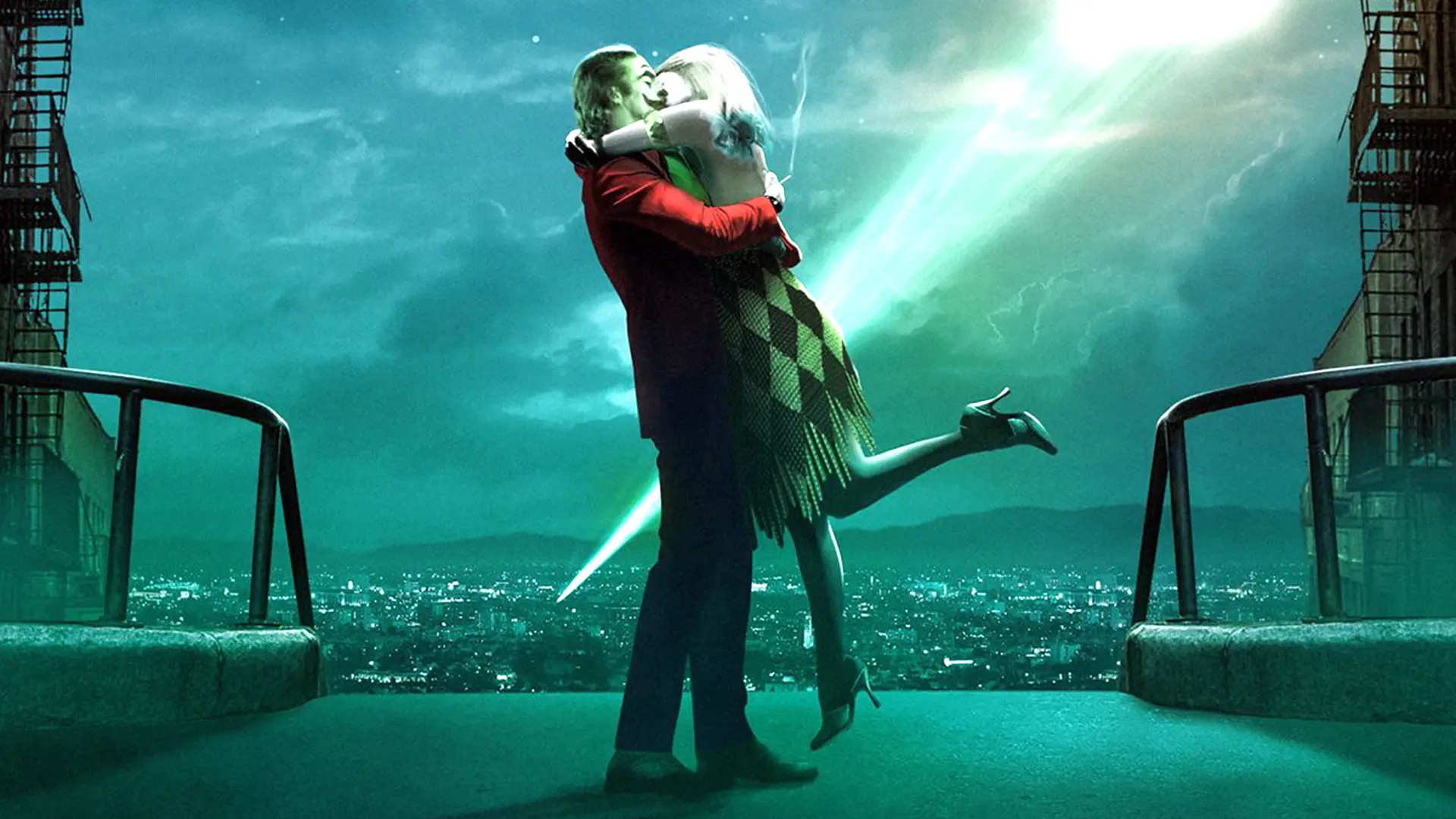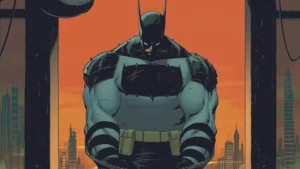Joker 2: Folie à Deux has been released, and the audience has had mixed reactions to it. The movie’s ending leaves behind a few loose threads that raise questions, like: Did Arthur Fleck have multiple personalities or not? Why didn’t society accept him? Who is responsible for what happened to him, and what will he ultimately become? Let’s take a closer look at these questions and explore what the ending means.
Arthur Fleck and the Question of Multiple Personalities
The movie begins with an animation that resembles the old Looney Tunes cartoons, hinting that Arthur Fleck and the Joker are two distinct personalities—Joker acting as Arthur’s shadow. Whenever there’s a moment of fame or glory, Joker steps in, while Arthur retreats. Throughout the film, all the chaos and killings are attributed to the Joker rather than Arthur Fleck.

Arthur’s lawyer uses this as the basis for his defense, suggesting that Arthur suffers from multiple personality disorder. However, the movie never clearly defines this. Unlike a clear personality shift as seen in Moon Knight, Arthur’s transformation into Joker is gradual, almost imperceptible, blurring the line between Arthur and the Joker until they seem inseparable. It becomes evident that Arthur adopts the Joker persona, especially as he gains fame and confidence. As Joker takes over, Arthur becomes bolder, such as when he’s in court examining Mr. Puddle, with his accent changing as Joker.
The animation may also represent society’s perception of Arthur—people began seeing him as having two personalities because of what he did on the Murray Franklin show. People idolized the Joker while ignoring Arthur. Harley Quinn fits into this group—she loved the Joker but denied Arthur’s existence. Though she was deeply involved with Arthur, it turns out her obsession was with the Joker, not Arthur himself.

Harley’s obsession blinded her to Arthur’s reality. Arthur’s lawyer wanted to prove his dissociative disorder, but Harley glorified Joker and wanted to dismiss Arthur. The film’s title, Folie à Deux, captures this dynamic. It means two mentally ill people sharing the same delusion, perfectly depicting Arthur and Harley’s relationship. However, Harley’s illusion shatters when Arthur confesses that he alone committed all the murders, and that there was no Joker personality. She walks away, and eventually checks herself into Arkham Asylum. She visits Arthur regularly during his trial, but her love for Joker ends once Arthur admits there was no other personality.
The Inmate’s Role and Joker’s Legacy
After Arthur confesses in court that he was the one who committed all the murders and that he doesn’t suffer from split personality disorder, his lover Harley Quinn and those inspired by his Joker persona leave immediately. Arthur is taken to Arkham State Hospital. There, an inmate who has been watching him since the beginning comes to him and asks if he can tell him a joke. The joke is, in a way, about Arthur himself: a psychopath meets an old clown. The psychopath used to be a fan of the clown, but now the clown is no longer what he used to be; he’s just a drunk loser. The psychopath offers the clown a drink and asks what he wants. The clown says he’ll take whatever the psychopath is paying for. The psychopath then says the same line Arthur said to Murray before killing him at the end of the first movie: “You get what you deserve.” After saying this, the inmate kills Arthur, and as Arthur dies, the inmate laughs while carving a permanent smile onto his own face with the same knife he used to kill Arthur.
This inmate had been shown throughout the movie with no dialogue, simply observing. It becomes clear that Arthur’s Joker was an idea—a Joker who could bring chaos to Gotham but wasn’t the true Joker we know from comics or films. The inmate kills Arthur and takes up the Joker persona, becoming the “Clown Prince of Gotham.”
The inmate’s personality perfectly matches that of the Joker—a psychopathic individual who embraces chaos without remorse. The scars he carves into his face resemble those of Heath Ledger’s Joker, possibly as a nod to The Dark Knight. But there’s ambiguity around this—the inmate’s scars could also reference the Gotham Noir comics, where Joker first appeared with such scars. Whether this inmate is meant to connect directly to Ledger’s Joker remains uncertain, but what’s clear is that Arthur Fleck’s Joker was simply an idea, and the inmate has now taken up that mantle.
Separating Universes and Harley Quinn’s Tragic Turn
If you’re wondering whether this connects to Robert Pattinson’s Batman universe, the answer is no. Matt Reeves and James Gunn have made it clear that these movies exist in separate universes. In The Batman, we saw Barry Keoghan as the Joker, and these two versions of the character are very different.
Arthur is dead, Harley has left him, and another inmate has taken his place as the Joker. That’s the essence of Joker—his backstory is often left vague, unexplained, or revealed as an alternate reality. This new Joker embodies chaos, lacking any regard for Arthur’s trauma, which aligns well with the comic book portrayal of the Joker—unpredictable and pathologically manipulative.
Harley Quinn’s arc adds another tragic layer to the story. In Joker: Folie à Deux, she idolizes the Joker persona and manipulates her way into Arthur’s life, fabricating stories about her past to gain his attention. But when Arthur rejects the Joker persona, Harley is disillusioned and ultimately leaves him. This heartbreak for Arthur adds to the tragedy of his character—even the happiness he found in Harley was built on her lies. When she realizes what Joker truly is, Harley checks herself into Arkham Asylum.
The Trial and Arthur’s Life of Tragedy
The film also touches on Arthur’s televised trial. District Attorney Harvey Dent is depicted as ambitious, wanting to use Arthur’s case to further his career. The movie portrays Gotham as a literal and metaphorical hell for Arthur, with his mother mocking him, calling him “Happy,” adding further irony to his tragic life.
Arthur’s journey is a dark exploration of identity, societal rejection, and madness. Joaquin Phoenix’s portrayal once again captures the rawness of Arthur’s despair and his desperate grasp at being acknowledged. The new Joker, by contrast, is a more calculated embodiment of chaos, ready to take Gotham by storm.
Final Thoughts
Joker: Folie à Deux ends with Arthur’s death and the rise of a new Joker, leaving us with many unanswered questions about who or what Joker really is. Joker is, at his core, an enigma—a character whose backstory is as complex as the chaos he brings. Whether this new Joker will evolve to face Batman remains to be seen, but one thing is for sure—this sequel gave us a chilling and thought-provoking twist on the Joker mythos.
What do you think of the new Joker? How connected do you think he is to Heath Ledger’s portrayal? Should we have televised trials in our country too? Please let me know in the comments. If you liked this video, give it a like, and if you loved it, please subscribe to the channel. Thank you, guys. This is Aman Sinha, and you’re super, super awesome.






